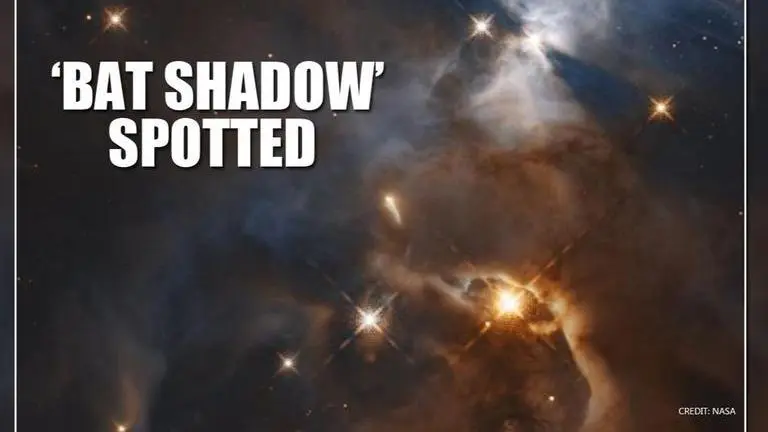Updated 27 June 2020 at 18:11 IST
NASA's Hubble telescope spots cosmic pair of flapping ‘Bat Wings’ in space, watch video
NASA’s Hubble Space Telescope, in new observation, captured stunning images that resemble a pair of flapping bat wings almost 1,300 light-years from earth.
- Science News
- 3 min read

NASA’s Hubble Space Telescope, in new observation, captured stunning images that resemble a pair of flapping bat wings in the cosmos almost 1,300 light-years from Earth. The new observations, published on June 25, show images of HBC 672. Nicknamed Bat Shadow, the young star lies in the Serpens Nebula.
The star is surrounded by a saddle-shaped disk which creates the shadow resembling flipping bat wings. The disc is a circling structure of gas, dust, and rock, and is too small and too distant to be seen, even by Hubble. However, based on the projected shadow, scientists do know that its height-to-radius ratio is 1:5. The wing-like shadowy feature appears to be so large that it stretches out about 200 times the diameter of the entire solar system. The star is called ‘young’ as it is just one or two million years old which is not too long a period in the cosmic term.
In 2017, Hubble saw a huge, wing-shaped shadow being cast on a distant star-forming cloud by a young star’s planet-forming disk.
— Hubble (@NASAHubble) June 25, 2020
Now, after observing the shadow again, astronomers report that they see the giant shadow flapping its "wings"! Read more: https://t.co/O4c2lhBgiT pic.twitter.com/J0s51J4o3x
In a new study, researchers observed the star with the help of Hubble and noticed the shadow "flapping." Led by Klaus Pontoppidan, an astronomer at the Space Telescope Science Institute (STScI) in Baltimore, the researchers didn't expect to see the shadowy feature "flapping." But as the researchers observed the shadow over a period of 13 months, they could see that it has moved.
Advertisement
Imagine the whole phenomenon of shadow casting as a lamp which with a shade that casts a shadow on the wall. However, in case of cosmic bat wings, the star is the lamp, the disk surrounding it acts as a lampshade to cast shadow on a distant cloud. This illustration given below shows a fledgeling star surrounded by a saddle-shaped disk which has two peaks and two dips. The warping could possibly be caused by a planet embedded in the disk which could possibly be inclined to the disk's plane. As the disk rotates around the young star, it is thought to block the light from that star and cast a varying, flapping shadow on a distant cloud.
Advertisement
"You have a star that is surrounded by a disc, and the disc is not like Saturn's rings — it's not flat. It's puffed up," Pontoppidan said in a statement. "And so that means that the light from the star, if it goes straight up, can continue straight up — it's not blocked by anything. But if it tries to go along the plane of the disk, it doesn't get out, and it casts a shadow."
The team of researchers calculated that a planet warping the disc would orbit its star in at least 180 days. The distance is estimated to be about the same distance from its star as Earth is from the Sun. The team also suggest the disc must be flared, with an angle that increases with distance — like a trumpet. While the researchers believe that a planet is embedded in the disc, they also highlighted the possibility of lower-mass stellar companion orbiting HBC 672 outside the plane of the disc. However, it remains a less likely explanation considering the thickness of the disc. Evidence for a binary companion has also not been obtained yet.
(Image credits: NASA)
Published By : Priya Pareek
Published On: 27 June 2020 at 12:09 IST


